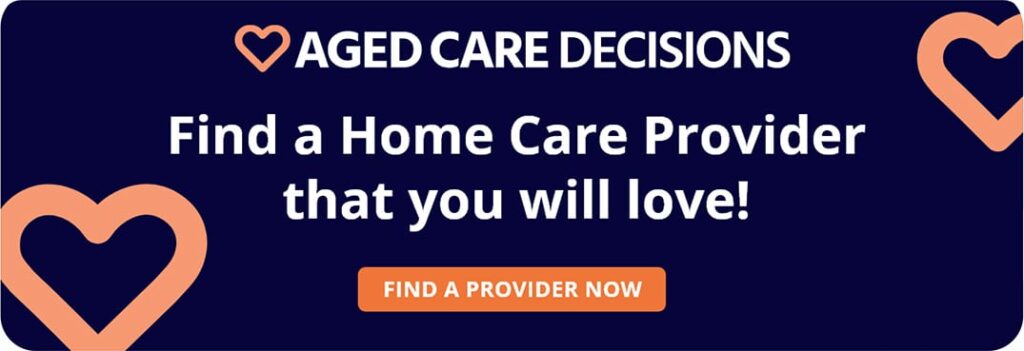Between understanding different types of aged care, making choices about facilities, and dealing with costs, families are often faced with layers of financial paperwork and unfamiliar terminology. One of the most important parts of this process is the income and means assessment. It determines how much an individual will pay for aged care services and how much the government will subsidise.

To make this easier, let’s break it all down; what the assessment is, why it matters, how it’s calculated, and what you need to know if you or a loved one is preparing for aged care.
What Is an Income and Means Assessment?
In aged care, an income and means assessment is a formal evaluation of a person’s financial situation. It is used to decide:
- How much the person can reasonably afford to contribute toward their aged care.
- How much government subsidy or financial support they should receive.
The assessment looks at two key elements:
- Income – regular earnings such as pensions, rental income, superannuation payments, or investment returns.
- Means (Assets) – the value of what you own, like savings, property, investments, and personal belongings.
Together, these give a full picture of financial capacity. Importantly, it ensures the system is fair: those who can afford to contribute more do so, while those with limited resources receive greater assistance.
Why Is It Necessary?
Aged care services whether at home, in residential facilities, or through respite care, come with costs. Governments subsidise much of the cost, but with an ageing population these subsidies need to be distributed equitably. The assessment serves several purposes:
- Fairness – Ensures wealthier individuals pay their fair share, while those with modest means are protected from unaffordable costs.
- Sustainability – Helps the aged care system remain financially viable for future generations.
- Transparency – Provides clear guidelines on what costs are expected and what support is available.
Who Needs to Complete the Assessment?
Not everyone entering aged care will be required to undergo an income and means assessment. However, in most cases, if you want access to government-subsidised aged care, you will need to complete one.
Situations include:
- Residential Aged Care: If moving into an aged care home, an assessment determines accommodation contributions and daily fees.
- Support at Home Packages: For those receiving in-home support, the assessment sets any income-tested care fees.
- Respite Care: Short-term care arrangements may also involve assessment to calculate contributions.
If you choose to self-fund your aged care without government subsidies, you may not need an assessment, but this option can add up in expenses for most.
Start comparing providers rightaway with a tailored report sent to you within 20 minutes. Get started here.
Residential Aged Care:
If moving into a residential aged care home, a more comprehensive means assessment is required, as it covers both income and assets.
What’s Included
- Income: Just like in a home care assessment, all forms of ongoing income are included.
- Assets: Bank accounts, investments, real estate, vehicles, super balances, and personal valuables may all be included.
Special Treatment of the Family Home
A capped amount of $210,555.20 (as at 20 September 2025) or the home’s net market value (if lower) is included as an asset.
For couples, only half the capped value or half the net value is included per person.
The home is entirely exempt if a “protected person” resides there, such as a partner or dependent child, a carer on income support (living there for at least two years), or a close relative on income support (living there for five years).
Couples and Shared Assets
Half the value of all combined assets is included, regardless of ownership, even if listed under one name only.
Timing and Validity
Like the income assessment, a means assessment can be organised in advance and is valid for 120 days. If significant financial or personal changes occur before moving in, another assessment is needed.
Outcome
The resulting fee advice letter outlines means tested care fees and any accommodation contributions required. It clarifies whether the government will cover some or all accommodation costs, or none at all.
Home Care
When applying for a Support at Home Package, an income assessment determines if a person needs to pay an income tested care fee in addition to the mandatory daily fee.
How It Works
Assessment Agency: Most people are assessed by Services Australia, unless they receive a means-tested payment from the Department of Veterans’ Affairs (DVA).
What’s Included: The assessment reviews all forms of regular income, including pensions, superannuation, investment income, and rental returns.
Couples: For couples, half the combined income is included in the assessment, regardless of which partner earns it. This applies even if the couple is living apart for health reasons.
Timing and Validity
Income assessments can be carried out at any time, even before entering care.
The result, delivered in a fee advice letter, is valid for 120 days. If there are significant changes (to finances or marital status) or there is a delay in entering care, a new assessment may be required.
What Happens Next
Once the assessment is finished, a letter is sent confirming whether an income tested care fee applies and specifying the amount. This gives certainty to both the care recipient and provider.
Fees Affected by Assessments
- Basic Daily Fee: A flat rate that covers everyday living expenses. Everyone pays this, regardless of their financial position.
- Income Tested Care Fee: Applies to Support at Home Package recipients with higher incomes, on top of the basic fee.
- Means Tested Care Fee: Relevant in residential care, based on a combination of income and assets.
- Accommodation Costs: Determined by the means assessment; high-asset individuals may pay the room price, others may qualify for partial or fully subsidised accommodation.
If someone is a full Age Pension recipient and has recently updated their income and assets with Centrelink, they usually do not need to submit the full Income and Assets (SA369) form again. Updates can typically be made through your Centrelink online account or by contacting Centrelink directly.
However, if you are applying for a new payment or Centrelink specifically requests the SA369 form, then it will need to be completed and submitted.
Upcoming Changes Under the New Aged Care Act
What’s staying the same
When the new Aged Care Act takes effect on 1 November 2025, the core features of the residential aged care means assessment won’t change. The types of income and assets considered and how the family home is treated will remain the same.
What’s changing
From 1 November 2025, several updates will apply under the new Act:
- New income and asset thresholds will be used to calculate means-tested fees.
- The hotelling supplement will become means-tested. Instead of being fully funded by government, some residents will contribute through a hotelling contribution.
- A new means-tested non-clinical care contribution will be introduced, with daily and lifetime caps to limit costs.
These changes apply to residents who enter aged care under the new fee arrangements from 1 November 2025.
Who is not affected
Residents who remain on the 1 July 2014 fee arrangements will not see changes. They will continue paying a means-tested care fee (if assessed as able to) with the existing annual and lifetime caps still in place.
New reporting requirements
From 1 November 2025, both providers and residents will need to meet new mandatory reporting rules to keep financial information up to date for means assessments.
It’s normal to feel anxious and unsure about change. If you are concerned about what these changes potentially mean for you, we can help you to understand exactly how home care is changing and how the changes will affect you.
Each year, we help tens of thousands of Australians understand the aged care system and connect with high-quality providers tailored to their circumstances.
Our home care support service is 100% FREE, independent and obligation free.
Here’s how our FREE service works:







